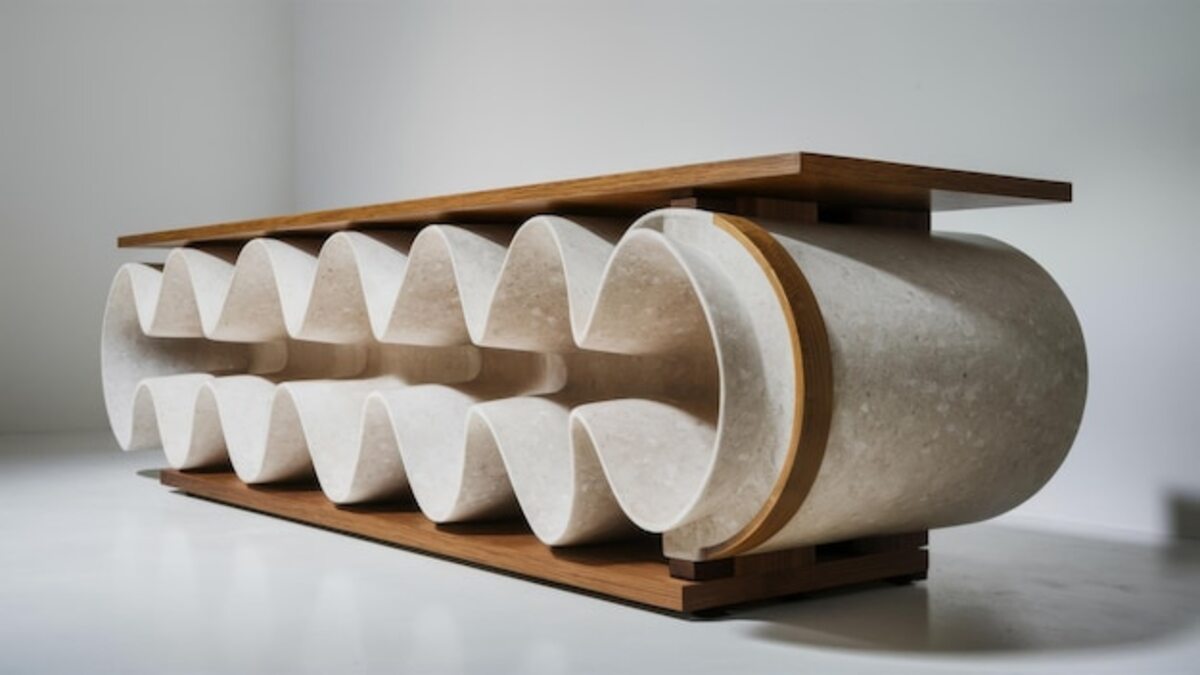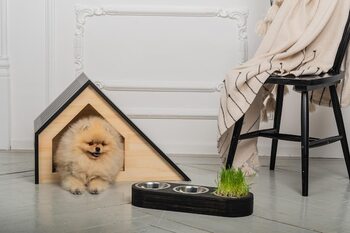Contemporary style: reinventing urban spaces with character

Contemporary style has transformed the way we perceive our urban and suburban spaces, bringing a vibrant freshness and unmistakable character to every corner. In this article, we will explore how these modern trends not only reinvent the aesthetics of our cities but also promote a more functional and sustainable lifestyle. Discover how integrating contemporary elements can breathe new life into your environments, creating spaces that reflect your personality while adapting to the needs of today's world.
1. Key features of contemporary style in urban design
Contemporary style in urban design is characterized by its focus on functionality and simplicity. Clean lines, open spaces, and the integration of technology are essential elements that define this style. Materials such as glass, steel, and concrete not only contribute to a modern aesthetic but also allow for better interaction with the environment. This trend seeks to create places that are accessible and welcoming, where people can enjoy urban life without feeling overwhelmed by its density. The inclusion of green areas and well-designed public spaces is also fundamental, promoting a sense of community and well-being.
Another central aspect of contemporary style is its commitment to sustainability and respect for the environment. Contemporary urban designs prioritize eco-friendly solutions, such as rainwater harvesting systems, green roofs, and efficient use of energy resources. These elements not only help reduce the ecological footprint but also promote a healthier lifestyle for residents. Furthermore, the adaptability of spaces is increasingly valued; versatile structures that can change according to the needs of the user or the environment reinforce this contemporary philosophy. Thus, by incorporating these key characteristics into our urban spaces, we contribute to a more resilient and harmonious future.
2. Essential elements for creating a contemporary environment
To create a contemporary atmosphere, it is essential to select a color palette that respects the essence of the style. Neutrals, such as white, gray, and beige, are ideal for establishing a serene and elegant base. However, one should not be afraid of bolder accents; vibrant or pastel colors can serve as touches of personality in the decor. The key is to balance these elements to maintain visual harmony and create a cozy and appealing space. Additionally, matte finishes and soft textures complement this style, adding warmth without sacrificing modernity.
The choice of furniture also plays a crucial role in creating a contemporary environment. Opting for pieces with clean lines and geometric shapes can help maximize space while maintaining a minimalist aesthetic. Multifunctional furniture is especially valued in urban settings where every square meter counts. Finally, incorporating natural elements, such as plants or organic materials like wood and stone, not only adds depth to the design but also promotes a connection with the outdoors, fostering a more vibrant and balanced atmosphere within the home.
3. The influence of sustainability on modern design
Sustainability has become a fundamental pillar in modern design, guiding not only the choice of materials and finishes but also influencing the way we conceive spaces. The incorporation of eco-friendly elements, such as reclaimed woods and organic textiles, not only minimizes environmental impact but also adds a unique and authentic aesthetic. This conscious approach to design allows urban spaces to reflect a balance between modernity and respect for the environment, fostering a deeper connection between people and their surroundings.
Moreover, sustainability drives innovations in architectural and urban planning. Contemporary designers are adopting strategies such as energy efficiency, the use of smart technologies, and the integration of green spaces to create environments that are not only visually appealing but also functional in the long term. This trend towards more responsible design transforms our cities into more livable and healthy places, where every element is designed to enhance the quality of life of its inhabitants on a sustainable basis. Thus, by reinventing our urban spaces with a modern character, we are actively contributing to a greener future.
4. Colors and materials: winning bets for urban spaces
The choice of colors and materials is essential to achieve a contemporary style that resonates with the essence of urban spaces. Neutral tones, such as gray, white, and beige, are combined with vibrant accents in colors like electric blue or emerald green, bringing dynamism without losing elegance. This palette not only enhances the brightness of the spaces but also allows each area to tell a unique story. Additionally, the incorporation of diverse textures —such as natural wood, metal, and stone— can create an appealing visual contrast that invites interaction and enjoyment of the environment.
Regarding materials, opting for sustainable options has become a key trend in contemporary design. Recycled or locally sourced materials not only minimize environmental impact but also add authenticity to urban spaces. The combination of industrial elements with warm finishes creates a perfect balance between modernity and comfort. By integrating these colors and materials into your home or business, you can create a cozy and character-filled environment that reflects both your personality and your values towards a more conscious and responsible lifestyle.
5. Versatile furniture: optimizing small spaces with style
Versatile furniture has become an indispensable ally for those looking to maximize functionality without sacrificing style. In small spaces, every piece counts and can serve multiple roles; from sofas that convert into beds to tables that can expand or fold as needed. This flexibility not only optimizes space usage but also allows for constant customization of the environment, adapting to the different needs of the inhabitants. Incorporating multifunctional furniture is a key strategy for maintaining a contemporary aesthetic, as many of these designs feature clean lines and modern materials that complement any urban decor.
Additionally, versatile furniture contributes to a more sustainable lifestyle by reducing the need to acquire multiple specialized pieces. By choosing furniture that can change its function or shape, not only is resource use minimized, but it also fosters a more conscious mindset about how we use and organize our spaces. This approach is not only practical in terms of savings and functionality, but it also allows for greater creative freedom when decorating. Thus, contemporary homes can reflect a balance between style and practicality, where each element has its place and purpose within the overall design of the urban space.
6. Integration of technology in contemporary design
The integration of technology in contemporary design is a key factor that redefines the functionality and aesthetics of our spaces. From smart lighting systems to home automation devices, technology not only adds convenience but also optimizes space usage. For example, houses equipped with virtual assistants allow control of heating, security, and other aspects of the home from anywhere, creating more accessible environments tailored to our daily routines. This technological approach translates into a more fluid and connected lifestyle, where each element is designed to work in harmony.
Moreover, technology allows for unprecedented customization in contemporary design. Applications enable users to adjust colors, textures, and settings to create a unique atmosphere that reflects their personality. New sustainable solutions also emerge thanks to technological innovations, such as solar energy systems integrated into architectural design or recyclable materials that minimize environmental impact. In this way, the fusion of technology and design not only beautifies our urban spaces but also promotes an essential ecological awareness in today's world.
7. Outdoor spaces: reinventing urban terraces and patios
Urban terraces and patios have become vital extensions of our homes, where contemporary design plays a crucial role in their reinvention. By adopting a minimalist and functional aesthetic, these outdoor spaces can be transformed into oases of relaxation and socialization. Elements such as modular furniture, vertical planters, and LED lighting systems not only add style but also optimize the use of available space, allowing even the smallest areas to be fully enjoyed. Incorporating natural materials like treated wood or stone also helps create a cozy environment that invites spending time outdoors.
Additionally, the sustainable approach of contemporary design promotes the integration of nature into our terraces and patios. The inclusion of native plants and vertical gardens not only beautifies the environment but also improves air quality and supports urban biodiversity. Tools such as efficient irrigation systems and recycled furniture are perfect examples of how functionality can be combined with respect for the environment. In this way, outdoor spaces not only enrich our daily experience but also encourage a conscious and responsible lifestyle with our urban surroundings.
8. How lighting transforms modern environments
Lighting is a key element in transforming modern environments, as it has the power to drastically change the perception of a space. In a contemporary style, minimalist fixtures and innovative designs are used that not only serve a practical function but also act as decorative pieces in themselves. Recessed lights, wall sconces, and pendant lamps are strategically employed to highlight architectural features and create specific zones within the home, thus allowing for greater flexibility in space distribution. The appropriate choice of color temperature also plays a fundamental role: warm lights can provide a cozy feeling, while cool ones convey modernity and freshness.
Additionally, the intelligent use of natural light complements this contemporary approach. Large windows and skylights allow sunlight to flood the spaces during the day, contributing to a bright and cheerful atmosphere that enhances overall well-being. The combination of natural light with artificial sources provides a perfect balance between functionality and aesthetics, which is essential in urban environments where the pace of life can be fast. Thus, by carefully choosing how to illuminate every corner of your modern home, you not only transform its visual appearance but also create a healthier and more dynamic environment that promotes both productivity and rest.
9. Inspiring examples of contemporary projects in Costa Rica
In Costa Rica, contemporary design has found fertile ground to flourish, with projects that not only beautify the urban landscape but also promote sustainability and functionality. An inspiring example is Parque La Sabana in San José, where green spaces have been integrated with recreational and cultural areas. This park not only acts as a lung for the city but also fosters social interaction among citizens, becoming a vital meeting point that reflects the community spirit of the country. The inclusion of modern architectural elements in its design makes this space a benchmark for how urban areas can be reinvented without sacrificing nature.
Another notable project is the "Las Palmas" building, an innovative residential structure that combines contemporary aesthetics with eco-efficient principles. With solar panels and rainwater harvesting systems, this development not only provides comfortable and attractive homes but also minimizes its ecological footprint. Its modern design incorporates spacious balconies and vertical gardens, creating a harmony between the natural and the built environment. These examples demonstrate how Costa Rica is at the forefront of contemporary design by addressing the current needs of urban dwellers while remaining true to its commitment to the environment.
10. Practical tips for adopting contemporary style in your home
To adopt a contemporary style in your home, it is essential to start with selecting a palette of neutral colors and natural tones that serve as a base for your spaces. Colors like gray, white, beige, and touches of black not only bring elegance but also allow decorative elements to stand out. Complement these tones with accents in more vibrant colors through accessories like cushions, artwork, or plants. This visual balance creates a cozy and modern atmosphere without falling into sensory overload.
The choice of furniture is another key aspect when implementing a contemporary style. Opt for functional pieces with clean lines and geometric shapes that maximize the available space. Multifunctional furniture is ideal for maintaining organization and optimizing every corner of the home. Additionally, incorporate sustainable materials like reclaimed wood or matte-finished metal to add an industrial touch that resonates with current trends. Don’t forget to add modern lighting; minimalist lamps can be both functional and artistic, adding character to your rooms while adequately illuminating each area.



